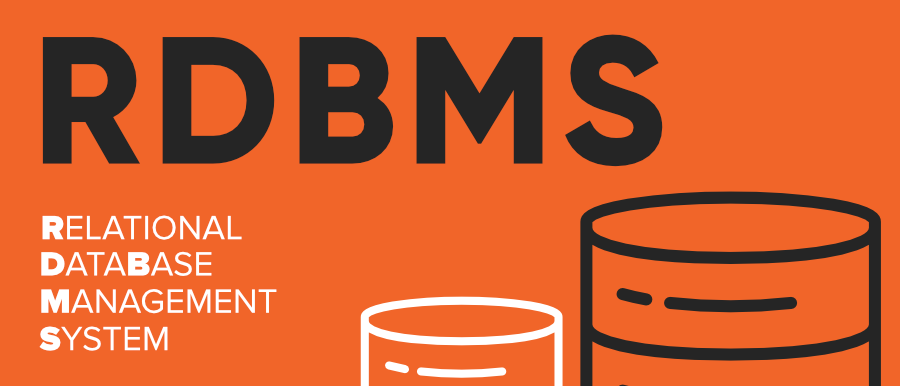RDBMS Full Form
Last Updated :
06 Nov, 2023
A database is an organized collection of data stored in a computer system and usually controlled by a database management system (DBMS). The data in common databases is modeled in tables, making querying and processing efficient.
What is RDBMS?
RDBMS stands for Relational Database Management Systems. It is basically a program that allows us to create, delete, and update a relational database. A Relational Database is a database system that stores and retrieves data in a tabular format organized in the form of rows and columns. It is a smaller subset of DBMS which was designed by E.F Codd in the 1970s. The major DBMSs like SQL, My-SQL, and ORACLE are all based on the principles of relational DBMS.

Relational DBMS owes its foundation to the fact that the values of each table are related to others. It has the capability to handle larger magnitudes of data and simulate queries easily.
Relational Database Management Systems maintains data integrity by simulating the following features:
- Entity Integrity: No two records of the database table can be completely duplicate.
- Referential Integrity: Only the rows of those tables can be deleted which are not used by other tables. Otherwise, it may lead to data inconsistency.
- User-defined Integrity: Rules defined by the users based on confidentiality and access.
- Domain integrity: The columns of the database tables are enclosed within some structured limits, based on default values, type of data or ranges.
Characteristics of RDBMS
- Data must be stored in tabular form in DB file, that is, it should be organized in the form of rows and columns.
- Each row of table is called record/tuple . Collection of such records is known as the cardinality of the table
- Each column of the table is called an attribute/field. Collection of such columns is called the arity of the table.
- No two records of the DB table can be same. Data duplicity is therefore avoided by using a candidate key. Candidate Key is a minimum set of attributes required to identify each record uniquely.
- Tables are related to each other with the help for foreign keys.
- Database tables also allow NULL values, that is if the values of any of the element of the table are not filled or are missing, it becomes a NULL value, which is not equivalent to zero. (NOTE: Primary key cannot have a NULL value).
Relational Database Model
The relational database paradigm, created by IBM’s E.F. Codd in the 1970s, enables any table to be associated to another table by means of a common attribute. Codd suggested a change to a data model where data is stored, accessed, and related in tables without restructuring the tables that hold them in place of hierarchical structures.
Each spreadsheet in the relational database model is a table that contains data, which is shown as rows (records or tuples) and columns (attributes).
A data type is specified by an attribute (column), and the value of that particular data type is contained in each record (or row). A primary key is an attribute found in all tables in a relational database that serves as a unique row identifier. Let’s take an example.
Example:
The following table STUDENT consists of three columns Roll Number, Name, Section and four records of students 1, 2, 3 and 4 respectively. The records can’t be completely same, the Roll Number acts as a candidate key which separates records.
| 1 |
Ishita |
A |
| 2 |
Yash |
B |
| 3 |
Ishita |
A |
| 4 |
Mallika |
C |
Advantages of RDBMS
- Easy to manage: Each table can be independently manipulated without affecting others.
- Security: It is more secure consisting of multiple levels of security. Access of data shared can be limited.
- Flexible: Updating of data can be done at a single point without making amendments at multiple files. Databases can easily be extended to incorporate more records, thus providing greater scalability. Also, facilitates easy application of SQL queries.
- Users: RDBMS supports client-side architecture storing multiple users together.
- Facilitates storage and retrieval of large amount of data.
- Easy Data Handling:
- Data fetching is faster because of relational architecture.
- Data redundancy or duplicity is avoided due to keys, indexes, and normalization principles.
- Data consistency is ensured because RDBMS is based on ACID properties for data transactions(Atomicity Consistency Isolation Durability).
- Fault Tolerance: Replication of databases provides simultaneous access and helps the system recover in case of disasters, such as power failures or sudden shutdowns.
Disadvantages of RDBMS
- High Cost and Extensive Hardware and Software Support: Huge costs and setups are required to make these systems functional.
- Scalability: In case of addition of more data, servers along with additional power, and memory are required.
- Complexity: Voluminous data creates complexity in understanding of relations and may lower down the performance.
- Structured Limits: The fields or columns of a relational database system is enclosed within various limits, which may lead to loss of data.
FAQs on RDBMS
Q.1: Why SQL is used in RDBMS?
Answer:
Within a database management system, SQL (commonly pronounced sequel) is used to store, retrieve, manage, and alter data.
Q.2: Why RDBMS is different from SQL?
Answer:
SQL is different from RDBMS because RDBMSs are managed by the query programming language SQL.
Q.3: Why is DBMS better than RDBMS?
Answer:
Whereas RDMS is designed for multiple users, DBMS is intended for a single user. Whereas RDBMS establishes data integrity constraints for Atomicity, Consistency, Isolation, and Durability, DBMS offers no protection about data integrity.
Like Article
Suggest improvement
Share your thoughts in the comments
Please Login to comment...